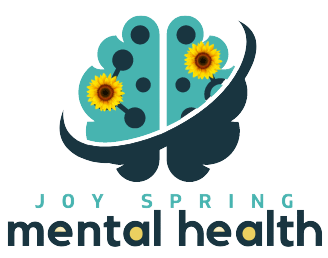Do you want to STOP worrying or START engaging in the present? For parents struggling with anxiety, intrusive thoughts, feelings of failure, or past traumas-this question can seem like a no-brainer. Obviously, they want to stop worrying. After all, that seems like the first step to engaging in the present. It turns out, it is much more complicated than that.
Did you ever play with one of those paddle board toys with the rubber ball and string attached? You know, the ones where you hit the rubber ball with the paddle then the string jerks it right back to you and you accidentally end up hitting yourself in the eye with the ball.
Anxious thoughts are much like that ball, the brain wants to hold on and they tend to bounce back in unpleasant ways until you get practice and find your rhythm.
Unfortunately, when it comes to anxious thoughts, most of us are like the kids who frantically hit the ball harder, miss the paddle altogether, get frustrated quickly and then give up and quit the game.
If the point of this paddle ball game is to develop hand eye coordination, pacing, and control; the point of anxious thoughts is to promote safety, consider danger in possible decisions, and find meaning in past hardships. When we think of this comparison, it is easy to see that the ball (or thought) aren’t really the problem. The problem is the unpleasant uncontrolled snapback. It would seem then that cutting the cord so the ball (or thought) is free and unstuck seems like the fastest and easiest way to stop the painful bounce-back and frantic, uncoordinated paddling.
Let’s experiment, I would like you to stop thinking about this game. It is silly. Do not picture the pink ball, white rubber stretchy string, or the staple holding the string to the wooden paddle. Definitely do not think about the thickness of the paddle, the weight of the ball in comparison to the paddle or the feeling of frustration when the ball misses the paddle. Do NOT think about this paddle-ball game at all.
How did it work? Not so great? Of course not. Nothing makes you think about something quite like trying to NOT think about it. Trying to NOT think about an anxious thought is as effective as trying to play this game with someone watching and not have them try to take over. It just doesn’t work.
If we are committed to playing the game and enjoying it while we play (i.e. living a full and engaged life), we are going to want to choose how to play with this ball stuck to the paddle. Our avenue to CONTROL is not really in changing the ball (thought). We get control by changing our response to the ball (thought).
Here’s what you can do when your brain is stuck on an anxious thought and it is bouncing back so fast it is painful and unhelpful.
- Realize that thoughts just are. You get to choose if and how you interact with them.
- Notice which thoughts cause you discomfort. Particularly notice the thoughts that cause you distress. Do they have a common component? Common anxious thoughts that cause distress in the perinatal and early parenting period are often the “should” and “have to” and “right” thoughts. For example, “I should pack the kids lunch. I have to get this right”. Other common thoughts that cause stress are the worst-case scenario thoughts.
- Find your rhythm. Just because you have a thought that causes distress does not mean you have to act on it. If you do engage the thought-do it with intention that aligns with your values. For thoughts that are anxiety producing and carry guilt and shame, try rewording the thought to make it more functional. For example, the thought “I have to get this perfect” is not helpful but can be re-examined as “I want to try something new.” The thought, “my child had an accident, they will never be toilet trained” can be reframed as “my child had an accident because learning something new is tricky but it will get easier with time.” Remember, every thought doesn’t need attention. Choosing to ignore a thought while being purposefully active in other ways can be a great strategy.
- Know when you need a coach (ie therapist or medication provider). If your thoughts are consistently causing distress and “missing the paddle” (i.e. overwhelming your coping mechanisms), it may be a sign that you need professional help. This is especially true if the thoughts aren’t lining up with the “paddle” and you don’t feel you can control your reaction (such as in OCD), if the anxious thoughts that keep bouncing back aren’t related to a reasonable trigger, the trigger is trauma-based, or the thought seems bizarre, scary, or disconnected from reality. For example, if you have the thought “I am going to do something wrong” and you have to repeatedly recheck yourself (painful, uncoordinated bounce-back), it is time to get help.


